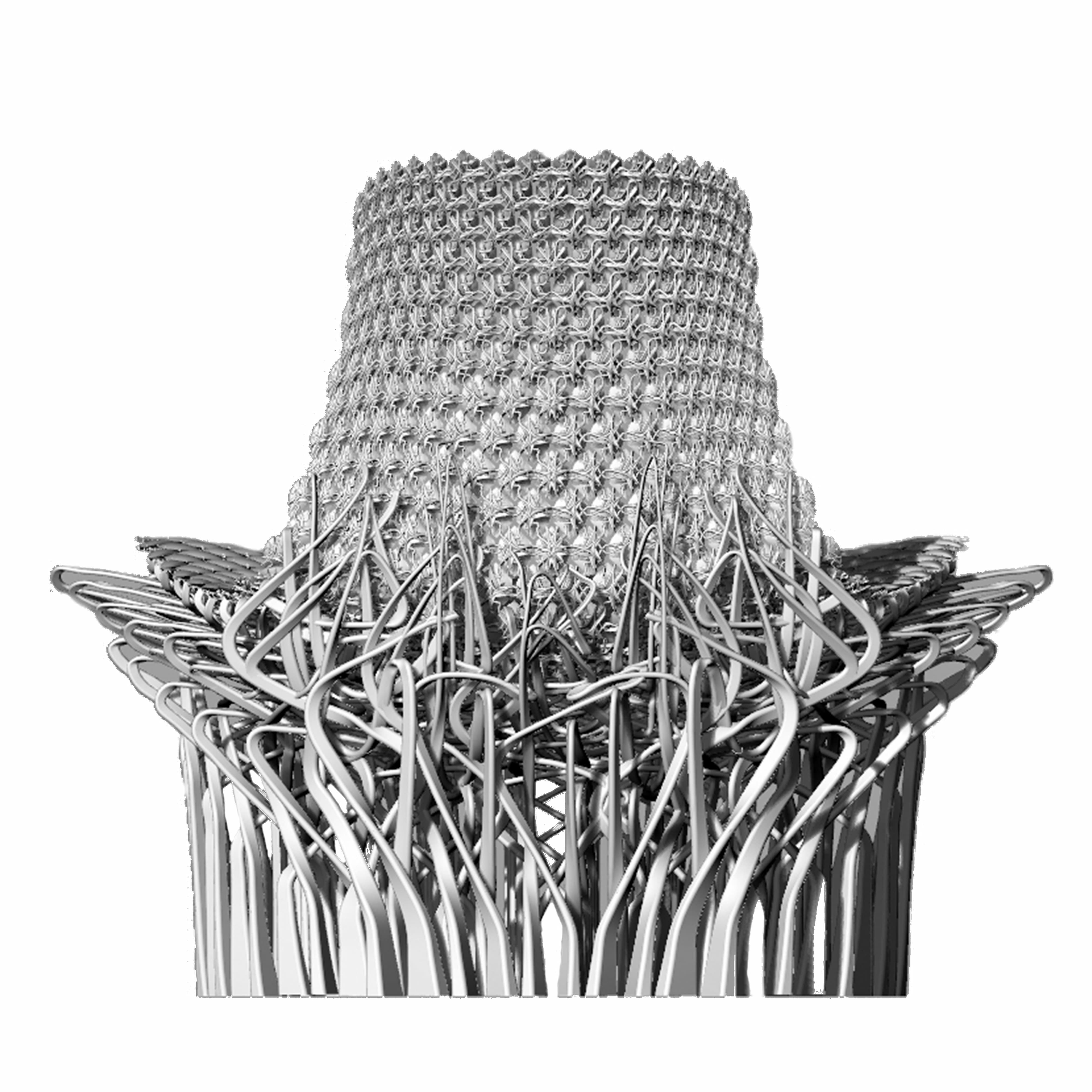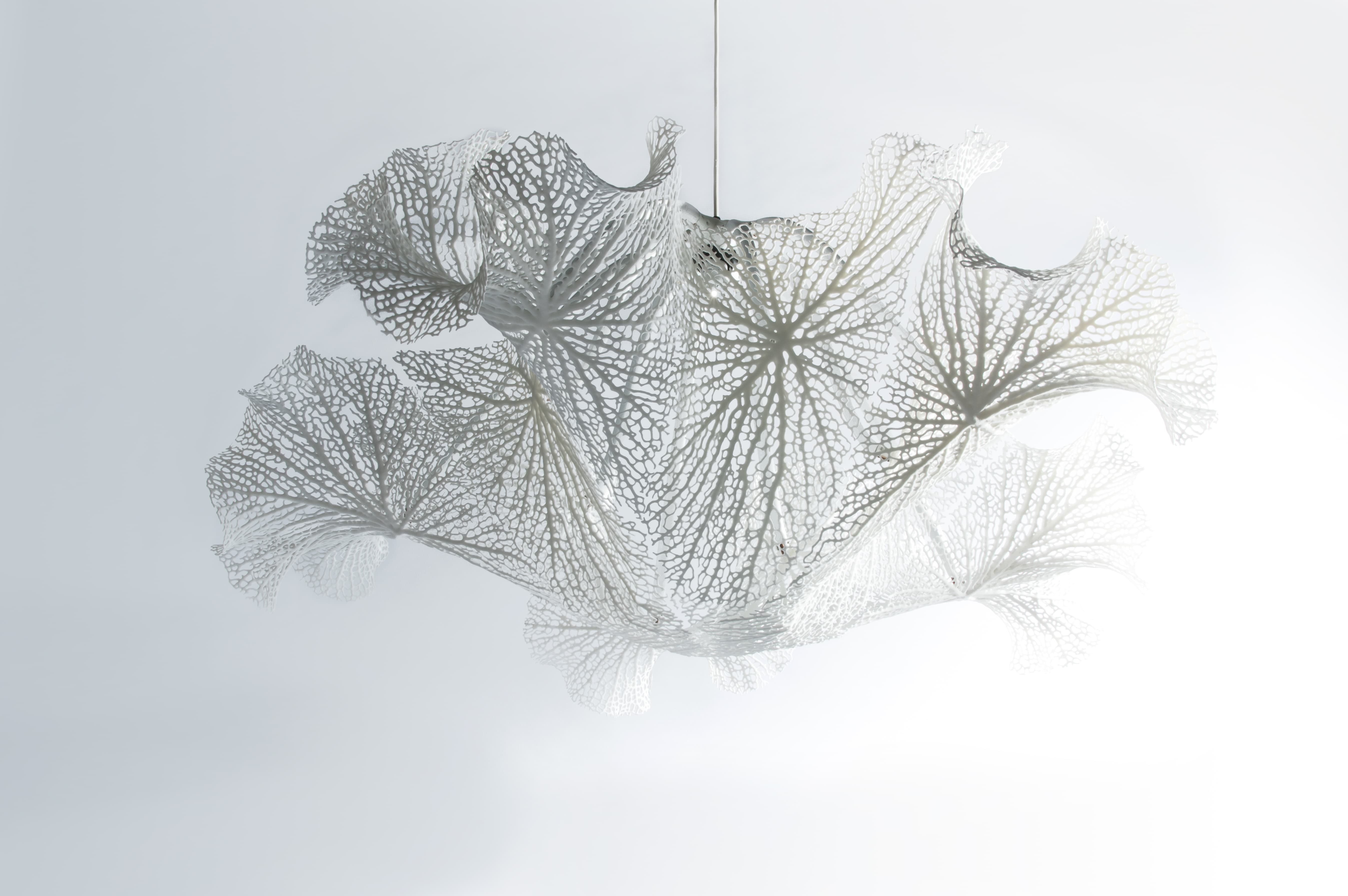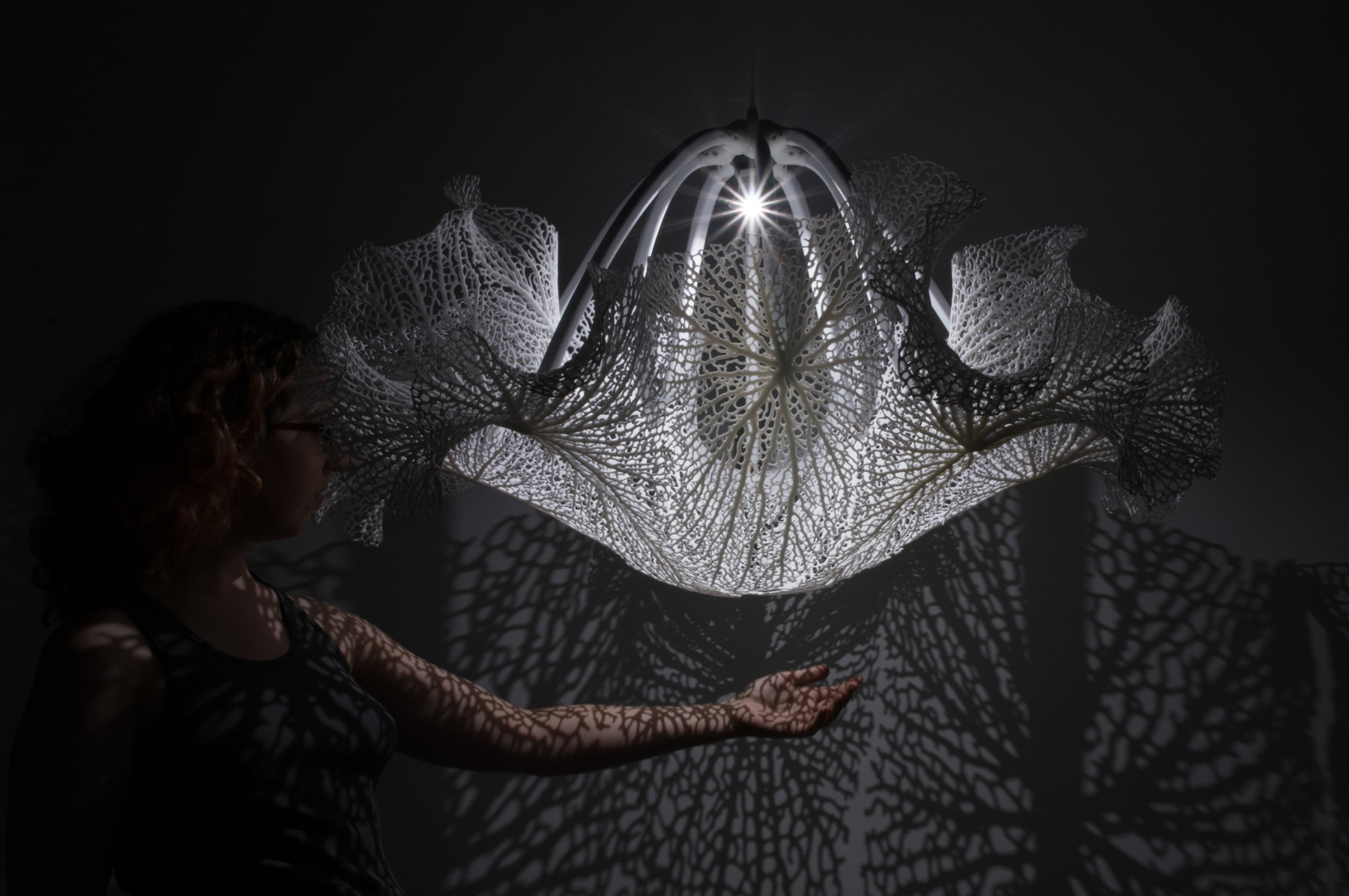Looking at the variability and seeming spontaneity of nature, it can be easy to forget that every flower and tree grows in accordance with mathematical and cellular systems. A single bloom is the result of thousands of cells dividing and multiplying, subtly adjusting their trajectories in response to stimuli such as light and temperature to create something unique from a shared process. These two works by Dutch designer Joris Laarman, founder of Joris Laarman Lab, and the American design studio Nervous System translate those formulas of growth into objects that combine design, technology, and natural forms.

Laarman’s shimmering copper Microstructures Adaptation Chair, also referred to as the Long Cell Chair, features branch-like legs and a seat made of interconnecting loops. Light filters through the open spaces in the seat like it might through a leafy canopy. The chair’s organic structure reflects the design process, which stemmed from a singular base component: a vertical “long cell.” These cells stretch, compress, and subdivide from the foundational support of the legs to the concentrated structure needed for the seat, in the same way a tree changes from a wide trunk to smaller branches to individual leaves (cat. 42).
Nervous System also looked to the plant world for their Floraform Chandelier. Cofounders Jessica Rosenkrantz and Jesse Louis-Rosenberg, who met while studying at MIT, were inspired by the growth of blooming flowers for the chandelier’s lightweight, ruffling shape and leaf veins for the delicate filaments of the nylon shade. Spanning over three and a half feet, the chandelier produces intricate and dramatic shadows that pattern surrounding walls and viewers with botanical forms (cat. 80 and detail).


While these objects are influenced by the biosphere, neither would have been possible without advanced technology. Both Microstructures Adaptation Chair and Floraform Chandelier were developed from complex software and then fabricated with an additive 3-D-printing process. Laarman and Nervous System created unique algorithms based on the differential growth of plants, where certain parts of the cellular structure grow more or differently than others; rather than environmental factors, the designers manipulated the objects’ growth and shape through mathematical inputs (fig. 1). Nervous System explained their process: “We consider this work a kind of digital gardening, except instead of growing plants we’re cultivating algorithms.”1 Similarly, Laarman describes his Microstructures Adaptation Chair as “more like an organism instead of an industrial design.”2 The comparable technical processes resulted in very different appearances and functions for these two objects, mirroring the diversity found within the natural world.
Kit Bernal
-
“Floraform,” Nervous System: Projects, 2014, https://n-e-r-v-o-u-s.com/projects/sets/floraform/. ↩︎
-
Joris Laarman, interview by Darrin Alfred and Kate Moomaw-Taylor, March 3, 2017. ↩︎